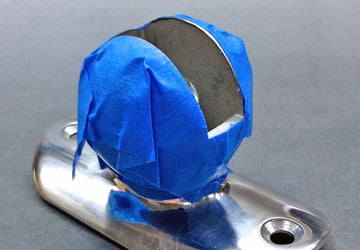Masking components and surfaces is a necessary part of every surface finishing process. Whether for abrasive cleaning, acid stripping, shot peening, plasma spray, or plating, masks act as a self-sacrificing barrier for surface protection. The process of masking may seem simple enough, but a thorough analysis reveals that it can add significant costs to any operation. These costs may not be readily visible, as the masking material is typically not the major contributing element to cost. Rather, it is the masking process itself (specifically the labor) that can be the major cost factor. The more intricate a component, the longer it takes to apply and remove traditional masks, such as tapes, waxes, and solvent-based lacquers. In addition, there are other hidden costs associated with using these masks. They can include scrap, component rework, production bottlenecks, workman’s compensation claims, and higher insurance premiums. When the cost of labor is factored in with the other hidden costs, it becomes apparent that simply using a lower priced masking material will not provide the desired cost savings that are required for greater competitiveness in the market. When traditional paths cannot offer tangible savings opportunities, the door must be opened to new technology. Such technology is now available with light-curable masking resins.

There are many popular masking products on the market today, including tapes, waxes...
VIEW CHAPTER ONE